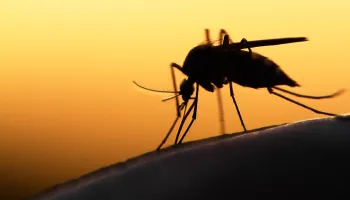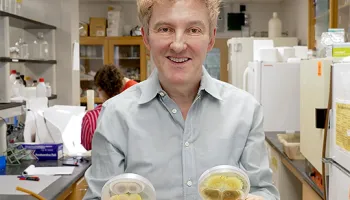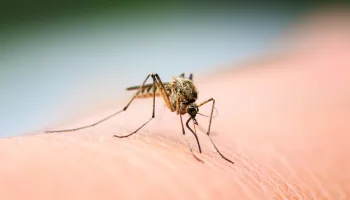Raymond St. Leger

Raymond St. Leger
Teaching
BSCI222: Prin Genetics
ENTM756: Insect Diseases
Graduate Program Affiliations
Research
The St. Leger Lab uses entomopathogenic fungi as models for understanding how pathogens in general evolve different host ranges, respond to changing environments, invade hosts and counter host immune responses. The lab has also engineered hypervirulent insect pathogens expressing spider toxins. The potential of these engineered pathogens to control mosquito vectors of malaria is being tested in the field. Other interests include mutualistic associations between microbes and plants that can be exploited to benefit agriculture.
Education
Ph.D., University of Bath, UK, 1985
M.S., University of London, UK, 1980
B.S., Exeter University, UK, 1978
Latest Papers
Could malaria mosquitoes be controlled by periodic releases of transgenic mosquitocidalMetarhizium pingshaensefungus? A mathematical modeling approach
Author(s): Binod Pant, Etienne Bilgo, Arnaja Mitra, Salman Safdar, Abdoulaye Diabaté, Raymond St. Leger, Abba B. Gumel
Latitudinal Clines in Climate and Sleep Patterns Shape Disease Outcomes in Drosophila melanogaster Infected by Metarhizium anisopliae
|
Ecology and Evolution
Author(s): Mintong Nan, Jonathan B. Wang, Michail Siokis, Raymond J. St. Leger
Transmission of transgenic mosquito-killing fungi during copulation
|
Scientific Reports
Author(s): Etienne Bilgo, Brian Lovett, Abel Souro Millogo, Issiaka Sare, Edounou Jacques Gnambani, Raymond St. Leger, Abdoulaye Diabaté
The evolution of complex Metarhizium-insect-plant interactions
|
Fungal Biology
Author(s): Raymond J. St. Leger
Metarhizium fight club: Within-host competitive exclusion and resource partitioning
|
PLOS Pathogens
Author(s): Huiyu Sheng, Raymond J. St. Leger
Wolbachia confers protection against the entomopathogenic fungus Metarhizium pingshaense in African Aedes aegypti
|
Environmental Microbiology Reports
Author(s): Etienne Bilgo, Maria Vittoria Mancini, Jacques E. Gnambani, Houeffa Adeline Tatiana Dokpomiwa, Shivan Murdochy, Brian Lovett, Raymond St. Leger, Steven P. Sinkins, Abdoulaye Diabate
A
Drosophila melanogaster
model shows that fast growing
Metarhizium
species are the deadliest despite eliciting a strong immune response
|
Virulence
Author(s): Jonathan B. Wang, Hsiao-Ling Lu, Huiyu Sheng, Raymond J St. Leger
Endoscopic retrograde cholangiopancreatography and endoscopic ultrasound endoscope reprocessing: Variables impacting contamination risk
|
Infection Control & Hospital Epidemiology
Author(s): Ashley M. Ayres, Julia Wozniak, Jose O’Neil, Kimberly Stewart, John St. Leger, A. William Pasculle, Casey Lewis, Kevin McGrath, Adam Slivka, Graham M Snyder
Bioremediation of mercury-polluted soil and water by the plant symbiotic fungus
Metarhizium robertsii
|
Proceedings of the National Academy of Sciences
Author(s): Congcong Wu, Dan Tang, Jin Dai, Xingyuan Tang, Yuting Bao, Jiali Ning, Qing Zhen, Hui Song, Raymond J. St. Leger, Weiguo Fang
Metarhizium: an opportunistic middleman for multitrophic lifestyles
|
Current Opinion in Microbiology
Author(s): Huiyu Sheng, Patrick J McNamara, Raymond J St. Leger



